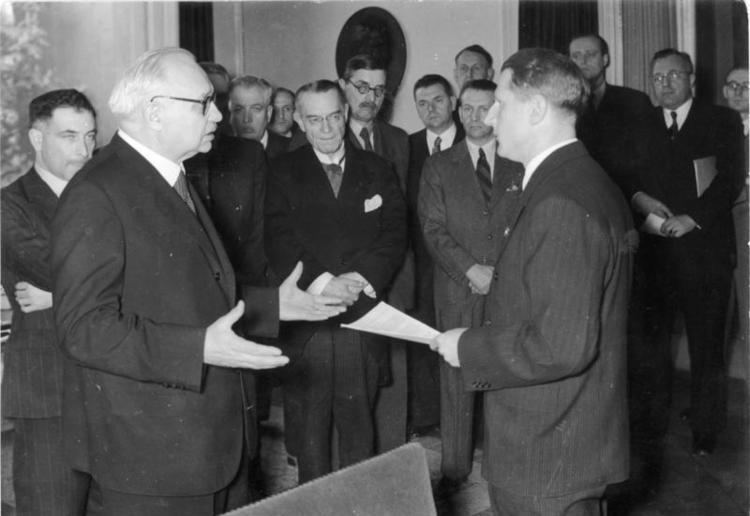Date April and May 1943 | ||
 | ||
Location Katyn, Kalinin and Kharkiv | ||
The Katyn Commission or the International Katyn Commission was the International Red Cross committee formed in April 1943 under request by Germany to investigate the Katyn massacre of some 22,000 Polish nationals during the Soviet occupation of Eastern Poland, mostly prisoners of war from the September Campaign including Polish Army officers, intelligentsia, civil servants, priests, police officers and numerous other professionals. Their bodies were discovered in a series of large mass graves in the forest near Smolensk in Russia following Operation Barbarossa.
The investigation was led by world-class pathologists, including Professor François Naville from University of Geneva, Dr. Ferenc Orsós from the University of Budapest, Professor Louis Speleers of the Ghent University in Belgium and Eduard Miloslavić, Croatian professor of pathology among others. The Commission concluded that the Soviet Union had been responsible for the massacre. Consequently, the German government made extensive reference to the massacre in its own propaganda in an attempt to drive a political wedge between the Allies of World War II alliance. The severing of relations between the Polish government-in-exile and the Soviet Union was a direct result of Polish support for the investigation.
The Soviets denied their responsibility for the crime immediately, and instead, created their own Extraordinary State Commission tasked with falsifying documents and forensic science in order to reverse the blame and charged Germany with the crime.
Seventy years of denial
The Soviet documents pertaining to the massacre were declassified only in 1990. They proved conclusively that 21,857 Polish internees and prisoners of war were executed by the Soviet Union after 3 April 1940 including 14,552 prisoners from three largest Soviet POW camps at this time.[a] Of the total number of victims, 4,421 officers were shot one by one at the Kozelsk Optina Monastery, 3,820 at the Starobelsk POW camp, and 6,311 at the Ostashkov facility, in addition to 7,305 Poles secretly eliminated in Byelorussian SSR and Ukrainian SSR political prisons. The head of the NKVD POW department, Maj. General P. K. Soprunenko, organized selections of Polish officers to be killed at Katyn and elsewhere.
In November 2010, the Russian State Duma admitted in its own official declaration that the Soviet officials led by the Generalissimo Joseph Stalin ordered the Soviet NKVD secret police under Lavrentiy Beria to commit the massacres. Among the victims were 14 Polish generals including Leon Billewicz, Bronisław Bohatyrewicz, Xawery Czernicki (admiral), Stanisław Haller, Aleksander Kowalewski, Henryk Minkiewicz, Kazimierz Orlik-Łukoski, Konstanty Plisowski, Rudolf Prich (murdered in Lviv), Franciszek Sikorski, Leonard Skierski, Piotr Skuratowicz, Mieczysław Smorawiński and Alojzy Wir-Konas (promoted posthumously).
